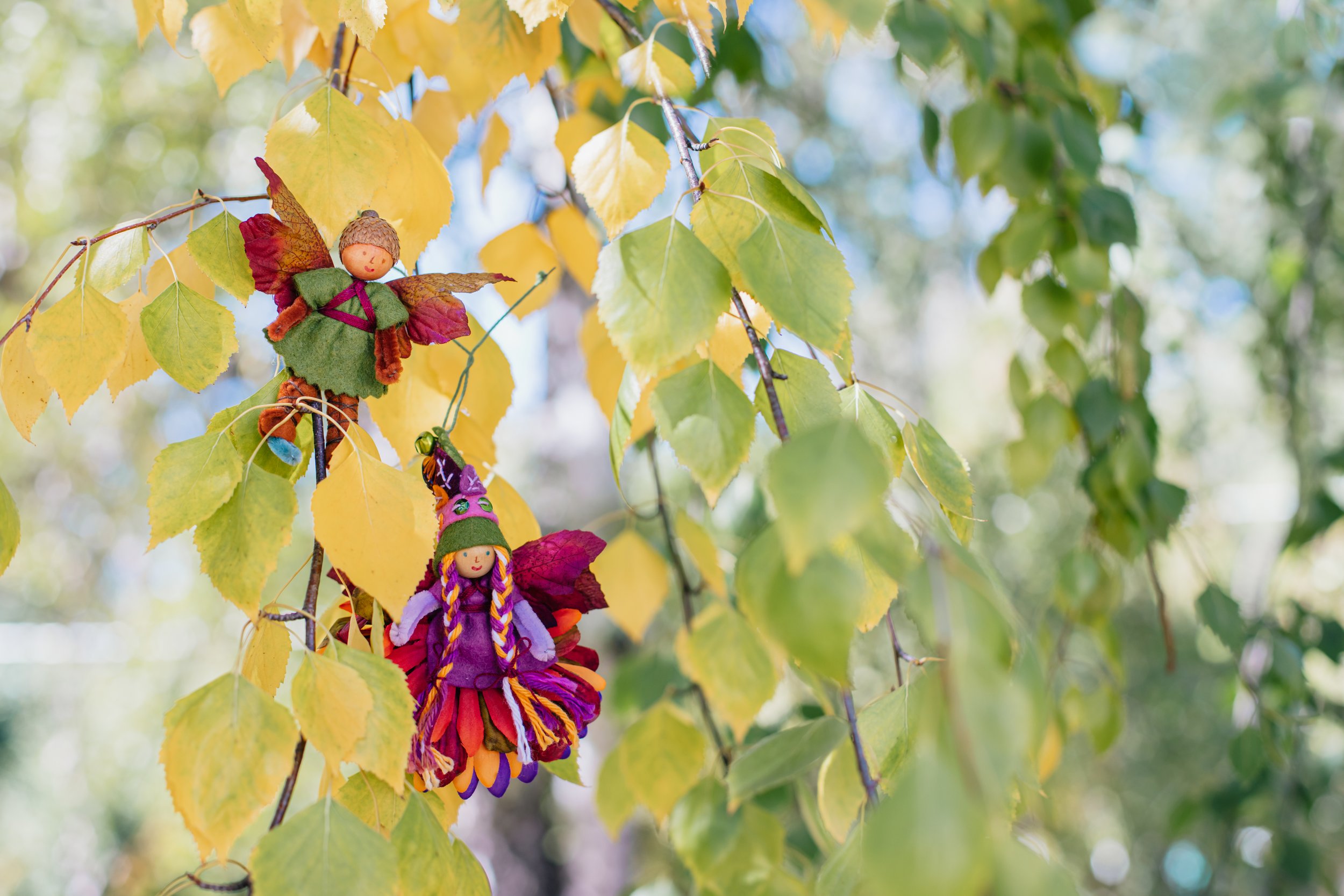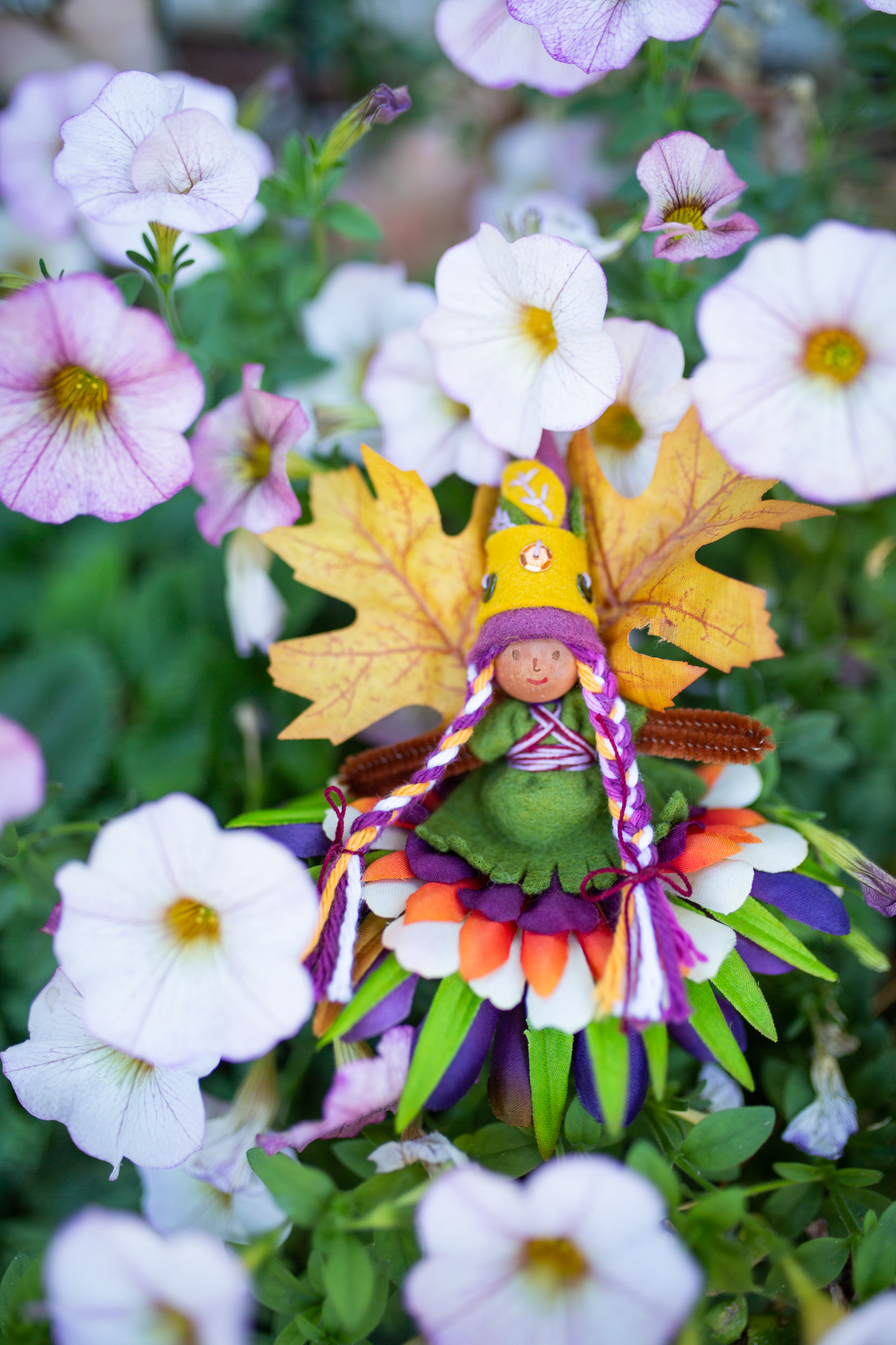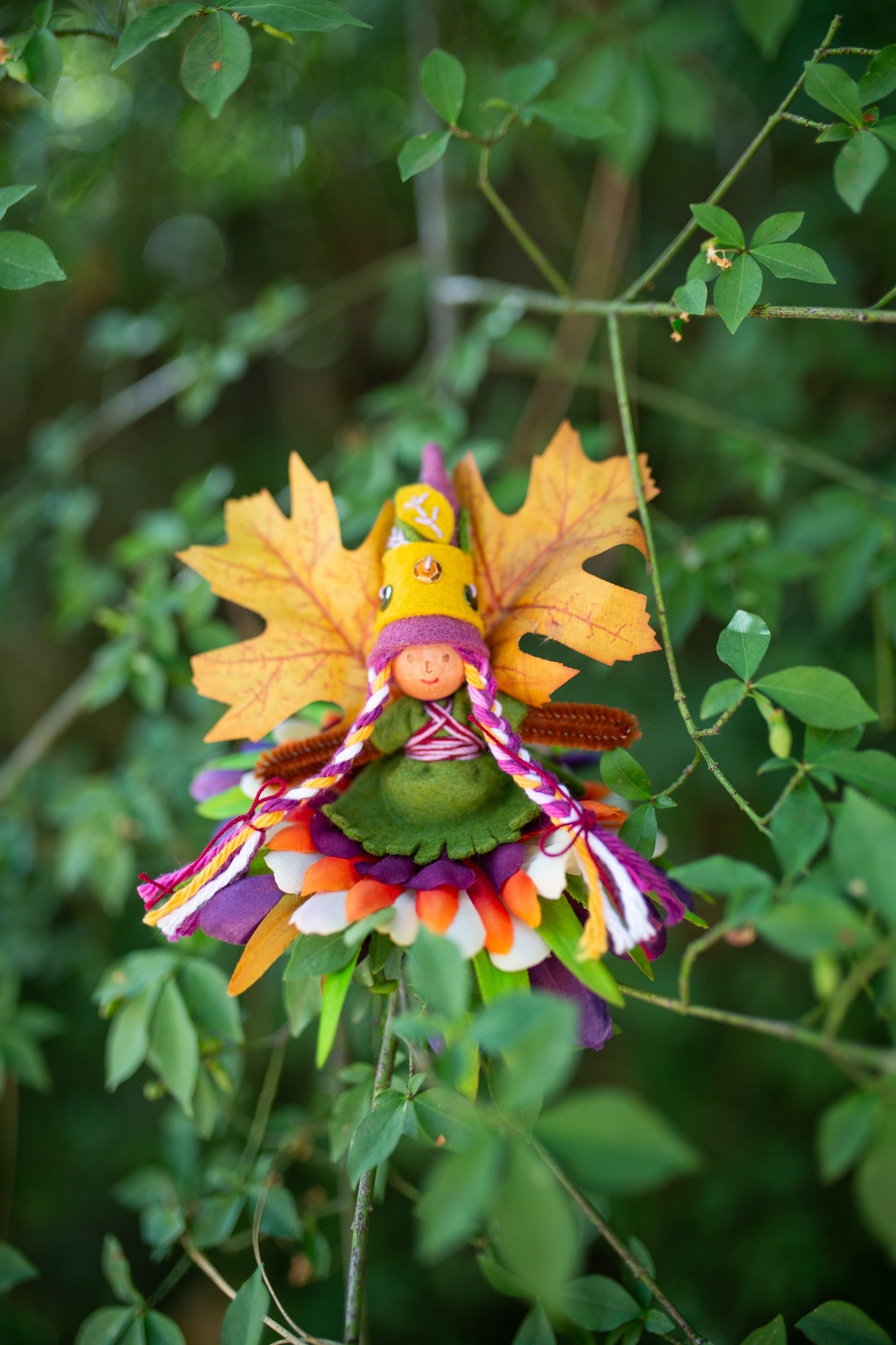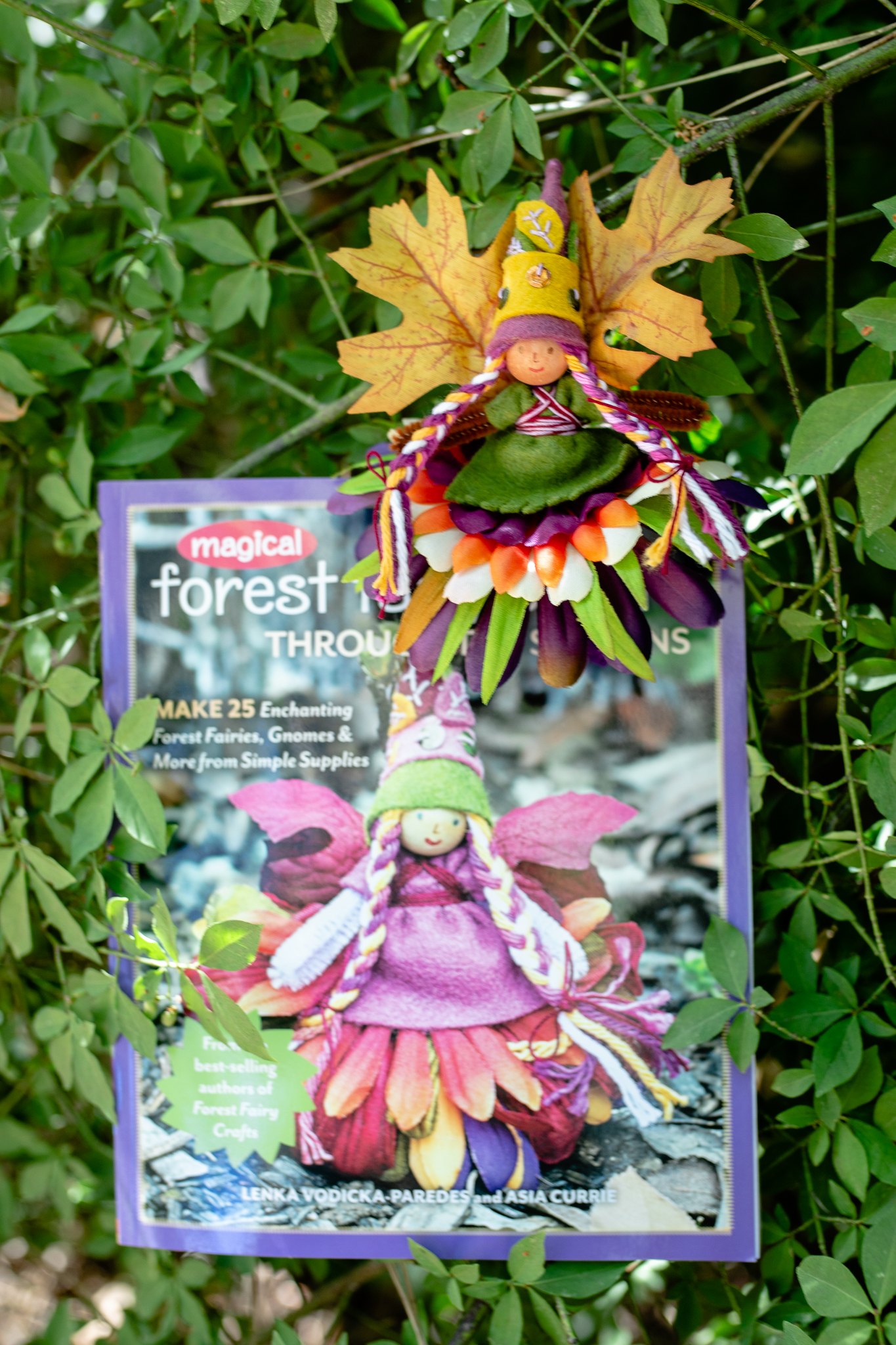
Thankful Book for Fall
In early November, we start our book of gratitudes. Each day we add a page or two or three. We collect the loose pages right before Thanksgiving. And we have a lovely read aloud for our family celebration. In my classroom, the pages became an activity center. At home, we write spend time together creating a child and adult version. Children appreciate hearing about adult gratitudes too.
A guideline that I gave myself was to not give children ideas. Beyond a vague, “family, pets, etc.” Some would go big with “air, earth, water.” Others went more detailed. Eventually, the obvious answers (in their mind) were written down. And then resistance, “I’m out of ideas.” And then the real opportunity- “I’m going to remember grapes to write, they’re so good.” Or, “I’m thankful for goodnight stories.” They took their authorship away from the table to open their mind to ideas away from the table. Which, for me, is the real goal all along. To recognize the many gifts in our day.
Autumn Fairy in Magical Forest Fairy Crafts Through the Seasons
I created book pages that you can download to use with children in your life. *Not for sale or resale. When you download, you’ll notice the book has 4 pages. Why would I do that? This way, each family or child gets to create their own number of pages. Save them as loose leaves until the day before Thanksgiving. That way, an author won’t run out of pages, or face a pile of empty pages on the last night before binding. Customize your book.
For older authors (6 and above), I use the smaller version which fits two pages on one piece of paper. I recommend cutting in half before binding, or you will have blank pages. Since writing instructions don’t often come easy for authors, here is my ladder of support. A conversation with authors that they understand is that the audience matters. Is this for Grandma and Grandpa to admire? Or is it just for the author? Because one way, the spelling may be more important that the other. And the main goal for a young author is to feel proud of their work. Not for us adults to judge or micromanage to the point that writing feels like a chore, but simply for the author to celebrate what they created. You may choose different styles of support based on the audience for the book.
Autumn Gnome in Magical Forest Fairy Crafts Through the Seasons
Also, many supports may be appropriate for different learning challenges. I let my dyslexic daughter dictate while I typed well into high school. She’s in college now and doesn’t ask me to type any of her papers anymore. So give writers the support they need to express their ideas. Which may change from day-to-day.
You can mix and match within the same day/on the same page. They can write until they’re turned and then an adult can finish. Choose a ladder plan, then adjust as needed.
Step 1- writing for the author, letting the author dictate. This is the way to catch all the thoughts and details. This can happen alongside scribbles or attempts at “sounding out” words so that they can be read and understood later.
Step 2- writing and tracing. Use a highlighter or light handwriting that the student can trace with their own pencil. If used, the dictation from above with a step for authors to explore writing it themselves.
Step 3- Write what you hear. This may look incoherent to adults. As long as the child can read it late, then it accomplished the purpose of writing to remember your words later. It doesn’t really accomplish the write-and-share idea, but I can’t read books in other languages, so, for this stage, I let the author reading their own work be enough
Step 4- Write to share. This time, another person needs to be able to understand your words. They don’t seem to be spelled perfectly or have all the right spaces, but another person may want to read them one day. This can be supported with verbal spelling help and room to make spelling mistakes.
Step 5- Write to impress. By this time, sight words should be pretty intuitive. Writing shouldn’t be so much work by this time. Now, spelling corrections and punctuation are involved in the process.
Autumn fairies in Magical Forest Fairy Crafts Through the Seasons
Realistically, think about how long this book will be around. This was created as a process-project meant to help authors notice the world with a spirit of gratitude. Many of these books will go into recycling. You may want to keep them. But then they’ll be a time capsule of where your author’s writing skills were at that point in time. I want young authors to enjoy writing. This project is close to my heart for inspiring young authors.
Feel free to print for personal or small-group use. Print pages 2-3 (large) or 2 (small) for as many middle pages as you may like. Usage rights do not include other teaching sites or third-party websites or sales. I appreciate sharing resources with you.
Add the last page as a bookend, because we are thankful for each and every author.
And of course, Autumn Fairies love to help write these books or hear these books read aloud. They’re always up for an adventure to find more things to appreciate!
We are thankful for you!
Thankful Fairy
Welcome to a season of thankfulness (which really is every season, right? ;)). We adore creating this fairy for everything we are thankful for in our lives. We start thankful thoughts with a fairy that notices things to appreciate. From the very small little things like saying “please” and “thank you” to the very big things like air and mountains, the world is filled with amazing things to appreciate.
After making a fairy, we create a space for collecting gratitudes. Writing gratitudes is perfect for craft time at home, writing at school, or homeschool curriculums. Collections can be created many different ways. We’ve made a book by folding paper in half and threading it together along the spine. Click here for more ideas for sewing a book. Actually, as I reflected on how we made these books, I realized that we didn’t sew the Gratitudes together until the end, so busy beavers could have thirty pages while slow and steady learners could have seven pages and not feel intimidated by blank emptiness waiting to be filled.
We’ve also written ideas on leaf-shaped papers to hang on branches for a Thankful Tree. And written on little slips of paper to collect in a box.
The amazing thing about taking note of appreciation over time, is that kids notice more and more things that inspire their gratitude.
We would start pages for a book, then, after collecting them for a week or two, we would bind them into a book. At first, children might struggle to notice a gratitude. Or they would go silly. I wouldn’t judge their choices. Everything is an important things to notice. And children move from idea to idea quickly. So the next day, perhaps they would settle into deeper connections. And, inevitably, they would have a collection of ideas that brought them pride, and maybe a few smiles too.
Easy ways to make projects for many ages and different learners
Start with loose pages. That way they can collect without running out of room or getting overwhelmed by blank pages.
For children who haven’t learned to write, an adult can write the sentences. Students enjoy reading their books no matter who writes the words.
Younger learners, or learners who can use writing support, may benefit from an adult writing I am grateful for ….. on each page.
Those learning to write can trace the letters I am grateful for … to practice. Or they can fill just the ends of sentences if tracing takes too much time.
Add drawings. If you write, I am grateful for family at the top of the page, an illustration of family adds to the magic.
Fairies love to help write the books or slips of paper. They also love to hear them read aloud. And by making gratitude a daily practice, children aren’t surprised by the question, “What are you thankful for?” And cultivating a sense of gratitude is a lifelong trait that brings happiness to children, their adults, and the fairies :)
What are you grateful for?
Speaking of that, it’s fun and wonderful modeling to create a book with the children. The more gratitude, the merrier.
We are grateful for you!
And directions to make the Autumn Fairy (perfect for gratitude) is in the Magical Forest Fairy Crafts through the Seasons* book.
Gratitude is appreciated all year :)
*affiliate link- should you choose to purchase, a small amount returns to the forest while your price remains the same.
Gratitude to Day 5

We wrote sweet ideas to catch up over the weekend. They were thankful for their pets, their school, and their imaginations. And their friends. Once the ideas start flowing, they cascade into a beautiful collection. I look forward to seeing the new page tomorrow. I hope you are keeping your books writing a little each day. We will get there together :)
Best wishes!














